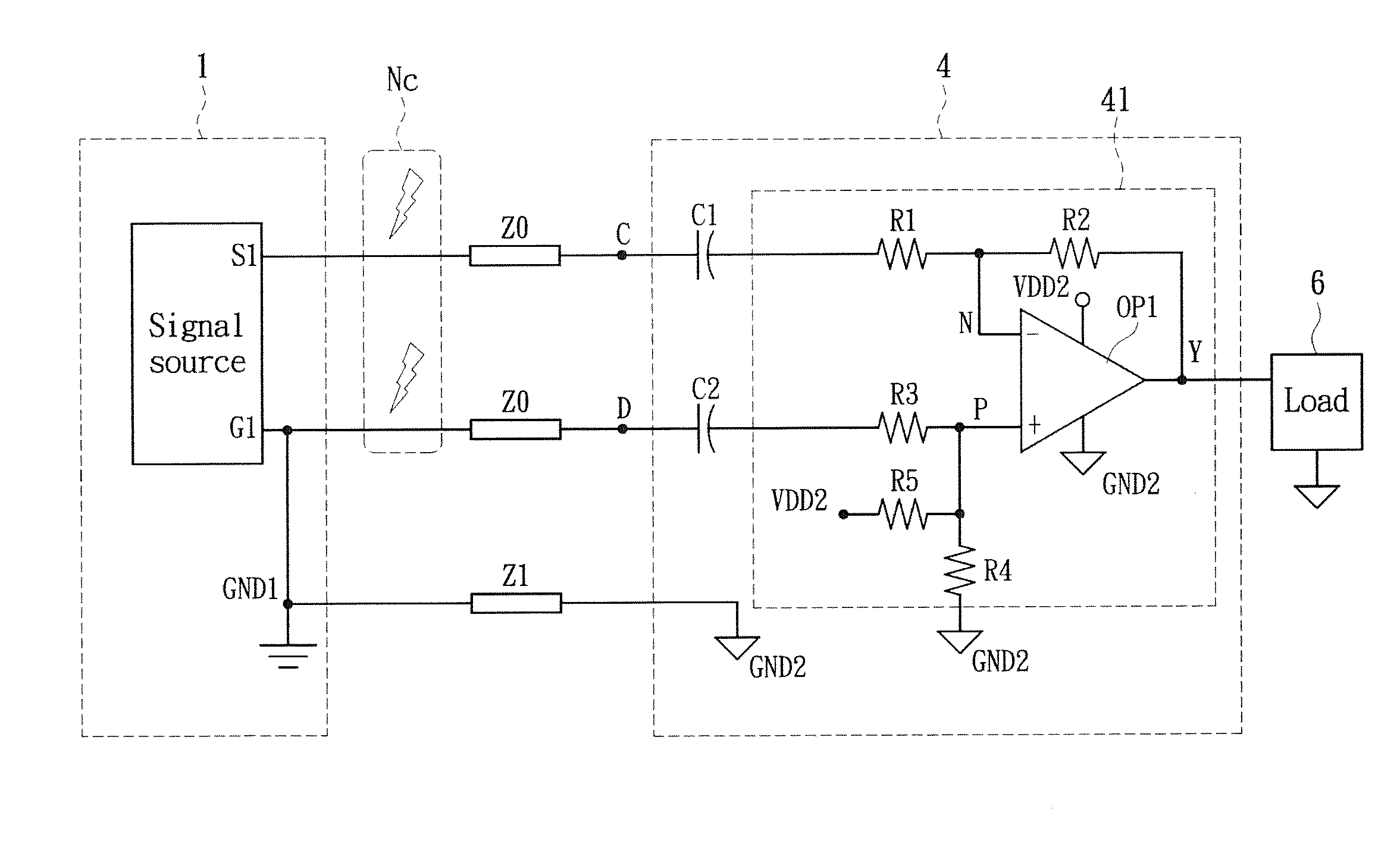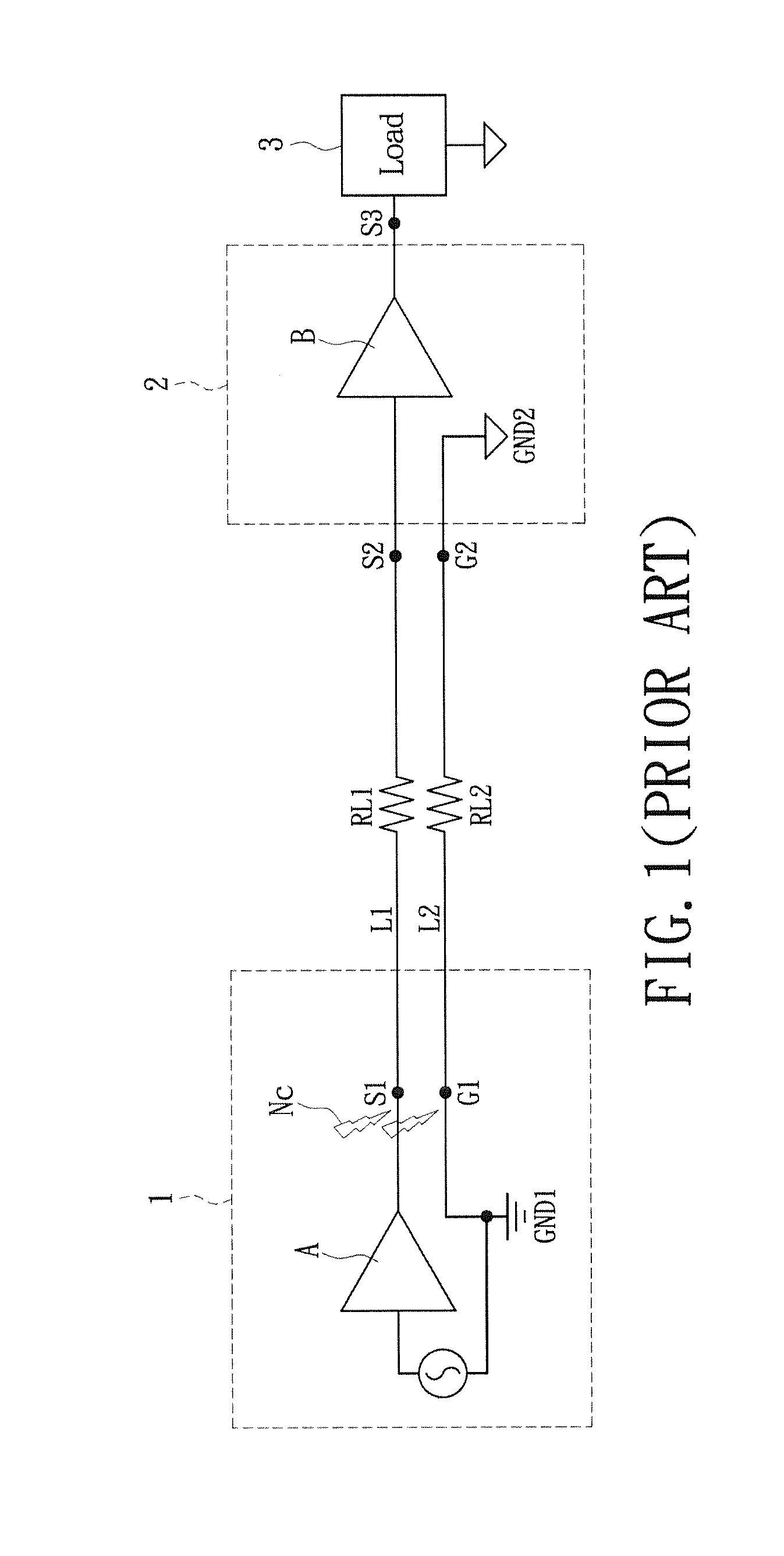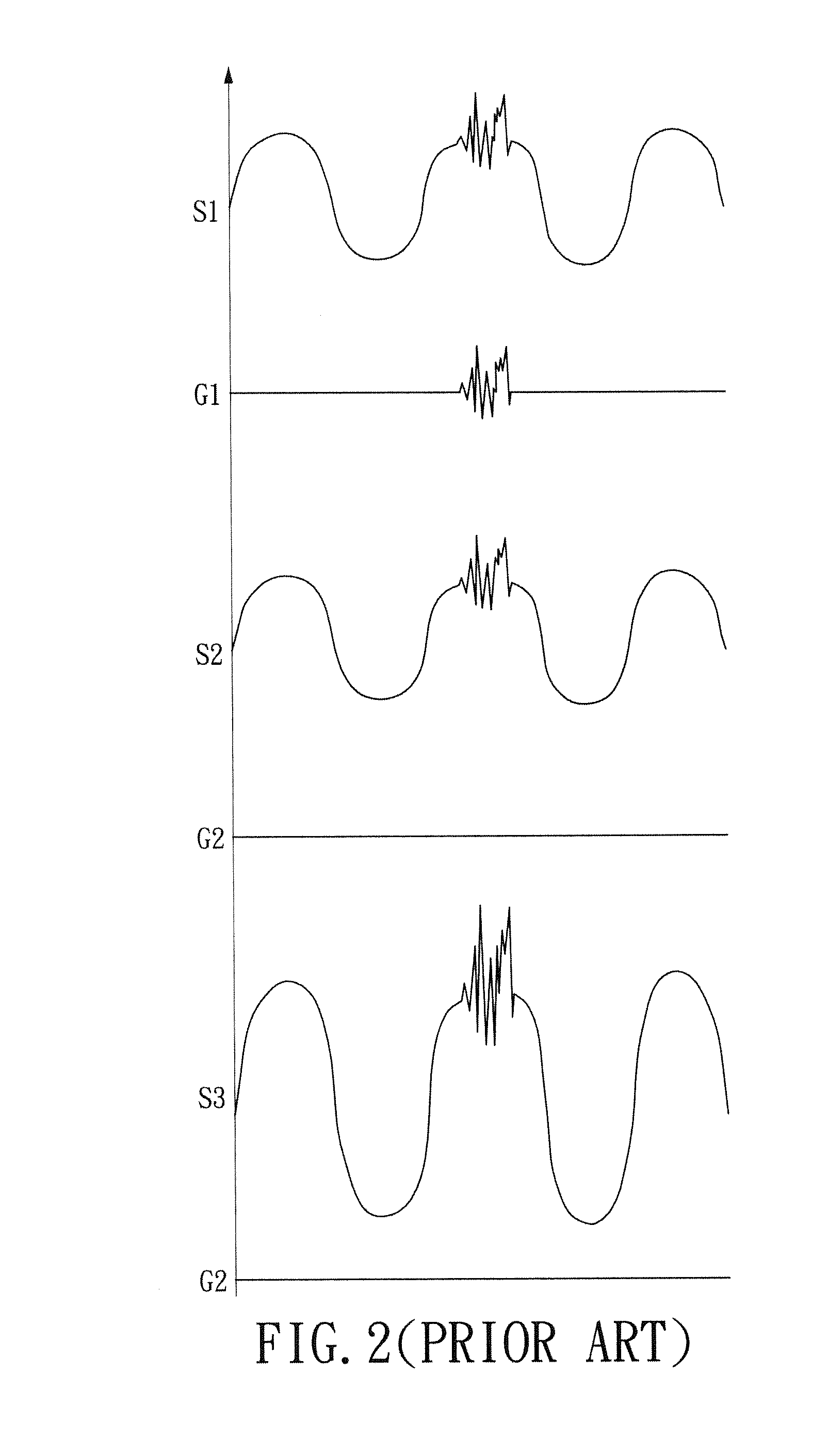Common mode noise cancellation circuit for unbalanced signals
- Summary
- Abstract
- Description
- Claims
- Application Information
AI Technical Summary
Benefits of technology
Problems solved by technology
Method used
Image
Examples
Embodiment Construction
[0020]Reference will now be made in detail to the exemplary embodiments of the present disclosure, examples of which are illustrated in the accompanying drawings. Wherever possible, the same reference numbers are used in the drawings and the description to refer to the same or like parts.
[0021][Embodiment of a Common Mode Noise Cancellation Circuit for an Unbalanced Signals]
[0022]Please refer to FIG. 3. FIG. 3 is a diagram illustrating a common mode noise cancellation circuit 4 for the unbalanced signals according to an embodiment of the present disclosure. The unbalanced signals are from a first signal terminal S1 and a second signal terminal G1 of a signal source 1. The second signal terminal G1 is coupled to a grounding terminal GND1 and possesses a first grounding potential. The unbalanced signals can be any signals that are single-ended and referenced to ground. The common mode noise cancellation circuit 4 comprises the grounding terminal GND1 and a subtractor 41.
[0023]The grou...
PUM
 Login to View More
Login to View More Abstract
Description
Claims
Application Information
 Login to View More
Login to View More - R&D
- Intellectual Property
- Life Sciences
- Materials
- Tech Scout
- Unparalleled Data Quality
- Higher Quality Content
- 60% Fewer Hallucinations
Browse by: Latest US Patents, China's latest patents, Technical Efficacy Thesaurus, Application Domain, Technology Topic, Popular Technical Reports.
© 2025 PatSnap. All rights reserved.Legal|Privacy policy|Modern Slavery Act Transparency Statement|Sitemap|About US| Contact US: help@patsnap.com



